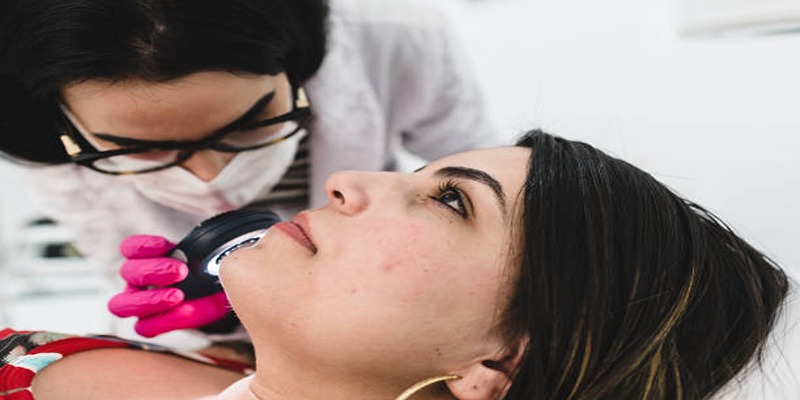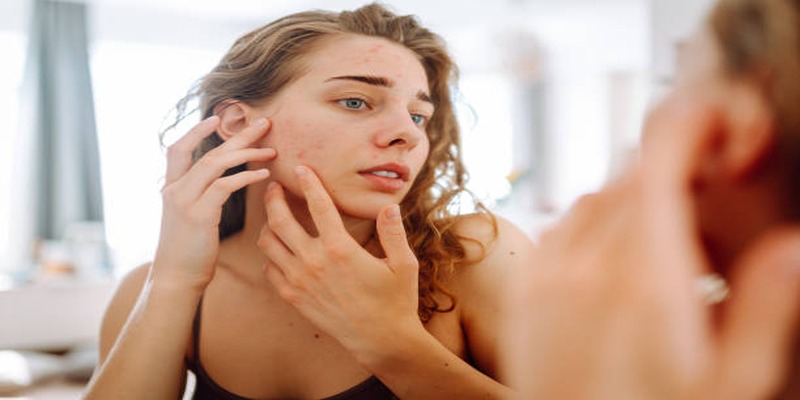Minocycline is a type of antibiotic that doctors often use to treat acne, a common skin condition that causes pimples and bumps. This medication works by reducing the bacteria that cause acne and decreasing swelling. Many people have seen improvements in their skin after using minocycline, making it a popular choice among healthcare providers. However, like all medicines, it is important to use minocycline correctly and to be aware of any possible side effects. This guide will provide you with detailed information about how minocycline works, how it should be taken, and what to expect from the treatment.
What is Minocycline?
Minocycline is a tetracycline class of antibiotics. It is a synthetic derivative of tetracycline family antibiotic which has been known and has been in used for several decades to treat different infections. This antibiotic is often selected for treating skin disorders including acne but it may be prescribed for other bacterial infections affecting the respiratory tracts, the urinary tracts or the reproductive system. However, as with other antibiotics, minocycline also possess anti-inflammatory properties that make it useful for managing conditions that have inflammation.
How Does Minocycline Treat Acne?

Acne develops from a blockage of hair follicles with oils and dead skin cells. This results in breeding of bacteria that cause inflammation with formation of pimples on the skin of the face. Minocycline belongs to the class of tetracycline and its action consists in suppression of bacterial growth coming from skin, which are typically the cause of acne, for instance Propionibacterium acnes. It also dock on genes that decrease the make of proteins that cause skin inflammation.
From this perspective, minocycline does not depend solely on its ability to act against the bacteria, but also eradicates the inflammation; therefore it can manage both moderate and severe acne.
How Should Minocycline be Taken?
Minocycline is available in various forms, including tablets, capsules, and extended-release tablets. The dosage and length of treatment will depend on your specific condition and your doctor's recommendations. In most cases, minocycline is taken once or twice a day, with or without food. It is important to follow your doctor's instructions carefully and to finish the entire course of treatment, even if your acne improves before completing it.
Effectiveness of Minocycline for Acne
Minocycline has been shown to be effective in treating acne, with studies reporting a decrease in inflammatory lesions by up to 70%. It is considered one of the more potent antibiotics for acne and is often prescribed for severe or cystic acne that does not respond well to other treatments. However, some strains of bacteria have become resistant to minocycline, so it may not work for everyone. In addition, it may take several weeks to see improvements in your skin, so patience is key when using this medication.
How to Use Minocycline for Acne Treatment
When using minocycline to treat acne, it is essential to follow a few guidelines to ensure the best results. These include:
- Take the medication as prescribed by your doctor. Do not skip doses or stop treatment early without consulting your healthcare provider.
- Use minocycline with caution if you have liver or kidney disease, as it can affect these organs.
- Avoid taking minocycline with dairy products, calcium supplements, and antacids, as they can decrease its effectiveness.
- Limit exposure to sunlight and tanning beds when using minocycline, as it can make your skin more sensitive to UV rays.
Possible Side Effects of Minocycline for Acne
Like all medications, minocycline may cause side effects in some people. The most common ones include:
- Nausea and vomiting
- Diarrhea
- Dizziness or lightheadedness
- Headache
- Skin sensitivity to sunlight
If you experience any severe or persistent side effects while taking minocycline, contact your doctor immediately.
Who Should Avoid Using Minocycline?

Minocycline may not be suitable for everyone, so it is important to discuss your medical history with your doctor before starting treatment. You should avoid using minocycline if you:
- Have a history of kidney or liver disease
- Are allergic to any tetracyclines
- Are taking other medications that may interact with minocycline
Lifestyle and Care Tips While on Minocycline
Along with taking minocycline, there are a few lifestyle and care tips that can help improve your acne treatment:
- Keep your skin clean by washing it twice a day with a mild cleanser.
- Avoid touching or picking at your pimples to prevent further inflammation or scarring.
- Use non-comedogenic skincare products to avoid clogging pores.
- Maintain a healthy diet and drink plenty of water to support healthy skin.
- Follow your doctor's recommendations for any additional acne treatments, such as topical creams or gels.
Alternatives to Minocycline for Acne Treatment
If minocycline is not suitable for you or does not work effectively, there are other options available for treating acne. These include:
- Topical Treatments: Alternatives like benzoyl peroxide, salicylic acid, and retinoids can be applied directly to the skin to reduce acne symptoms. These treatments work by unclogging pores, reducing inflammation, and killing bacteria related to acne.
- Oral Antibiotics: Other antibiotics such as doxycycline or erythromycin may be prescribed. These medications can help reduce the presence of acne-causing bacteria and alleviate inflammation when used appropriately.
- Hormonal Treatments: For females, hormonal therapies such as anti-androgens can be effective in managing acne, especially if it is linked to hormonal fluctuations.
- Phototherapy and Laser Treatments: Light and laser therapies can target acne-causing bacteria and decrease oil production in the skin, offering another therapeutic option for persistent acne.
- Diet and Lifestyle Changes: Adjusting diet to avoid dairy or high glycemic index foods, managing stress, and maintaining a consistent skincare routine may aid in improving acne symptoms.
- Professional Dermatological Procedures: Chemical peels, microneedling, or microdermabrasion conducted by a dermatologist can assist in removing skin layers affected by acne, promoting regeneration and healing.
Conclusion
Minocycline represents a potent option for acne treatment, offering significant relief for many who struggle with this common skin condition. While it is effective for chronic and cystic acne, it is crucial for patients to be aware of potential side effects and the necessity of adhering strictly to prescribed regimens. For those whom minocycline is not suitable, numerous alternatives exist, ranging from other antibiotics to topical treatments and lifestyle adjustments. Consulting with a healthcare provider ensures a personalized approach that addresses individual skin needs and concerns, paving the way for clearer, healthier skin.








